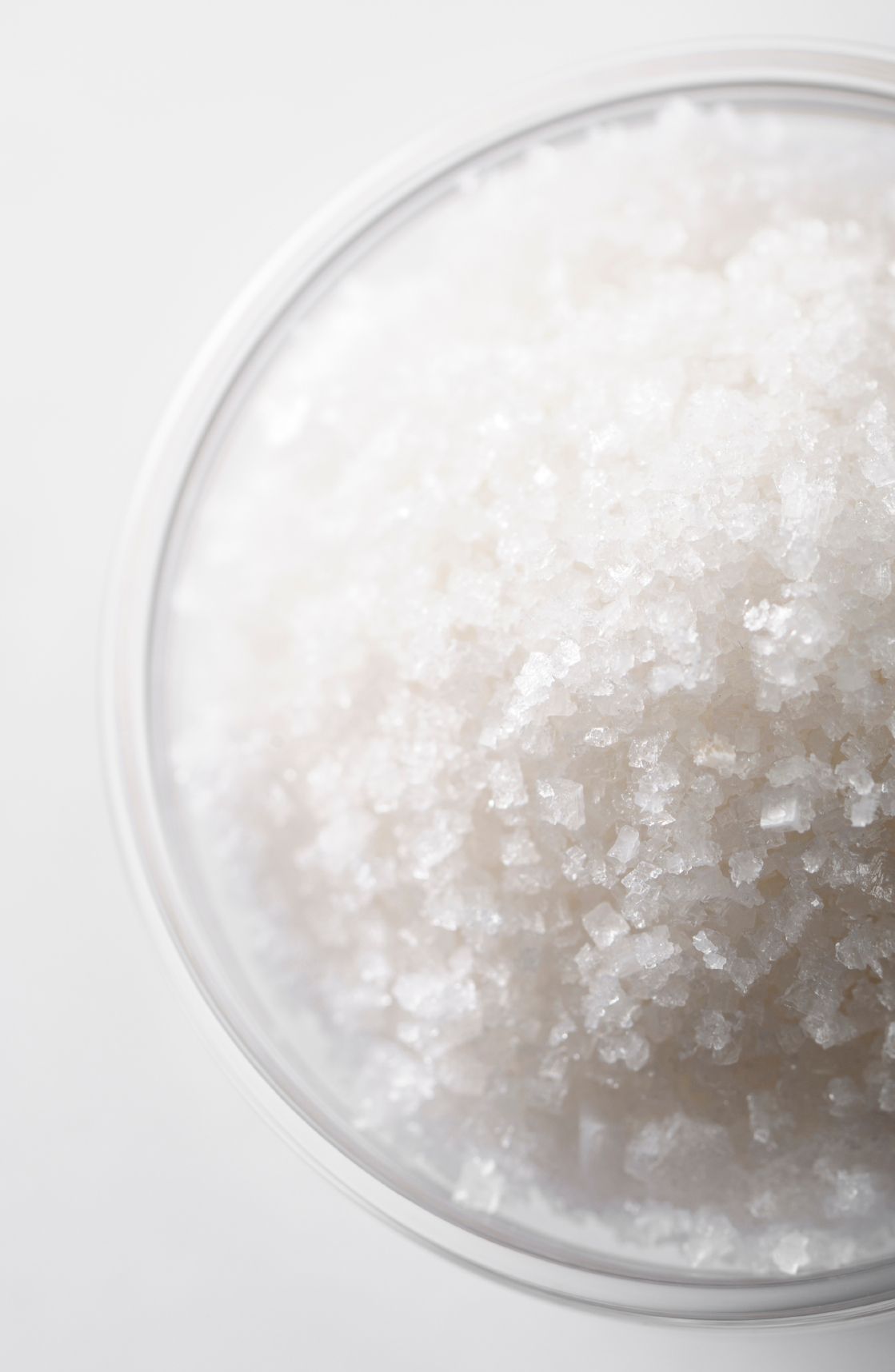Sophisticated Sodium-Reduction Strategies on High at IFT Show
From cat scans to particle structure, ingredient suppliers are using advanced methods to help food formulators cut sodium.
Photo © iStockphoto.com/EasyBuy4u

Long before FDA released draft guidance on sodium reduction on June 1, many packaged-food companies were already looking for ways to lower sodium content. FDA’s draft guidance is voluntary and in the long term seeks to reduce Americans’ sodium intake to 2,300 mg/day, down from current levels of 3,400 mg/day.
Sodium has been controversial for years, with those like the Institute of Medicine and the Centers for Disease Control and Prevention linking high intake to health risks like high blood sugar, heart disease, and stroke. Trade groups like the Salt Institute, as well as some scientists, on the other hand, argue that dangerously low sodium intakes are also detrimental to health.
No matter where they stand in the debate, what many consumers may not realize beyond news headlines decrying sodium is that sodium-salt, actually, which contains 40% sodium-serves a real, functional purpose in helping to keep food safe.
“Historically, prior to 100 years ago, salt was extremely important for food preservation. In the last 100 years, we knew that salt was good and that it did a lot for us, more than just providing flavor,” serving functions like protein extraction, protein binding, and aiding gluten development, said Janice Johnson, service leader, sodium reduction, Cargill (Minneapolis). “Until the whole sodium debate came up, we took salt for granted.”
Given sodium’s soiled image, many food firms are still looking to reduce sodium, however. Luckily, what we learned at this month’s Institute of Food Technologists Annual Meeting & Food Expo (IFT) is that ingredient suppliers are doing some advanced research to find alternatives that can help lower sodium content while still meeting the needs of food formulators-including the need to maintain a salty taste profile, food microbiology, and food texture.
Tools in the Toolbox
For Cargill, Johnson said at IFT, much of the company’s R&D work in sodium reduction revolves around understanding on a micro scale how salt functions within a food’s structure.
“We started doing a lot more research in this space to really try to understand the physical size and shape of salt,” she said. “The kind of research we are doing is on a very fundamental level. We’re doing things like x-ray tomography-a cat scan-to really look at the structure of food. What we want to understand is, if we pull salt out, what can we do-by either changing our processing conditions for a food or using other ingredients-to build back that structure.”
This thinking goes beyond just figuring out how to remove salt or some other sodium-containing ingredient from a recipe-an approach Johnson equates to simply as “application research.”
“Application research is saying, ‘I’m just going to take this ingredient out and put something in-kind of like the ‘cook and look’ approach-and see what it tastes like,” she said. By contrast, fundamental research looks at how companies can “change the microstructure of a food,” she said. “That can have a very big impact on the texture of the food and the flavor release of the food.”
Some of the sodium-reduction work Cargill has done involves still using salt as an ingredient, but altering the shape of the salt crystal (traditionally a cube) so that the ingredient can deliver the same salty flavor with less sodium content.
For instance, the company offers a salt crystal that is shaped like hollow pyramid instead of a traditional solid cube. Thanks to the crystal’s increased surface area, the consumer’s taste buds still perceive the same immediate salty flavor, but because the crystal is hollow, the crystal itself actually contains less sodium overall. The result? In French fries, for instance, “we are able to use 70% less of the salt, which resulted in up to about a 30% sodium reduction, and because of the increased surface area and quick dissolve, the consumer still gets a salty burst and actually thinks the flavor is salty or saltier than what the control would be,” Johnson said.
Thanks to the crystals’ ridged surface-or “little staircases,” as Johnson described it-the salt particles also adhere better to the French fry so that manufacturers need to use less salt. The company already sells this ingredient on the market as Alberger (for food processing) and Diamond Crystal (for food service).
Dairy ingredients can also step in to help salt step out. Over at the U.S. Dairy Export Council booth at IFT, Mary Wilcox, vice president of business development for the MidWest Dairy Association, described how whey permeate or other dairy product solids can lend salty flavor to food without the added sodium. One of the food prototypes the dairy groups served at IFT was a yogurt barley soup with whey permeate (which simply labels as “dairy product solids.”) The soup contained 410 mg of sodium per 1-cup serving, with the added bonus of higher protein content.
“If you look at the nutrition label of this product, it’s 13 g of protein but has about half the amount of sodium as a traditional condensed can soup,” Wilcox said.
Wilcox said the dairy industry has “been working on sodium reduction for a while, and not just from a flavor perspective but also from a food-safety perspective.” Already, the industry has seen “great results from a flavor perception or sensory standard” using these ingredients in products like soup, baked goods, and topical applications such as popcorn seasoning or seasoning for other salty snacks, she added.
Over at tomato extract supplier LycoRed’s (Be'er Sheva, Israel) IFT booth, the company demonstrated how its Sante tomato extract can reduce sodium levels. Chef Tony Lagana of Culinary Systems served up such reduced-sodium prototypes as a zesty Italian vinaigrette with 67% reduced sodium, ranch salad dressing with 61.5% less sodium, and a marinara sauce with 63% reduced sodium-all thanks to Sante. Lagana added that Sante “doesn’t taste like tomato; it just brings out the natural flavors.”
Other longstanding traditional sodium-reduction ingredients are relevant, too.
“Potassium chloride is still a very effective tool,” Cargill’s Johnson said. “Potassium chloride does basically the same thing as sodium chloride [salt]. It deals with the microbial management, food safety, protein extraction, helps with binding in meat products, helps develop the gluten, and it works to create the right salinity for microorganisms and fermentation.”
“It’s very, very similar to how salt works. It makes sense, if you look at where potassium and sodium are on the periodic table, that they would behave similarly,” she added.
Cargill has gone a step further and offers a product called FlakeSelect that marries both potassium chloride and sodium chloride in the same crystal. By combining the two, “we find that there are sensory attribute benefits,” Johnson said. “The salt helps to mitigate some of the bitter metallic notes of potassium chloride.”
An Active Research Area
Johnson said ingredient suppliers like Cargill should continue doing more of the fundamental research necessary to understand salt’s role in food formulating in order to develop appropriate strategies. “To me, that’s where the research needs to go. We need to be more pioneering in this space,” she said.
The work goes on, she said. “The industry has been working hard at trying to achieve some of the sodium targets that FDA and other relevant government organizations have put out there, while not compromising taste and other functional attributes that salt may be contributing.”
Also read:
Sodium Reduction: Solving Your Salt Problem
New Umamix Bold Ingredient Designed to Replace MSG, Reduce Sodium
Hypertension: Sodium: There’s More to the Story
Jennifer Grebow
Editor-in-Chief
Nutritional Outlook magazine
jennifer.grebow@ubm.com
Prinova acquires Aplinova to further increase its footprint in Latin America
April 7th 2025Prinova has recently announced the acquisition of Brazilian ingredients distributor Aplinova, which is a provider of specialty ingredients for a range of market segments that include food, beverage, supplements, and personal care.
HHS announces restructuring plans to consolidate divisions and downsize workforce
Published: March 27th 2025 | Updated: March 27th 2025According to the announcement, the restructuring will save taxpayers $1.8 billion per year by reducing the workforce by 10,000 full-time employees and consolidating the department’s 28 divisions into 15 new divisions.











